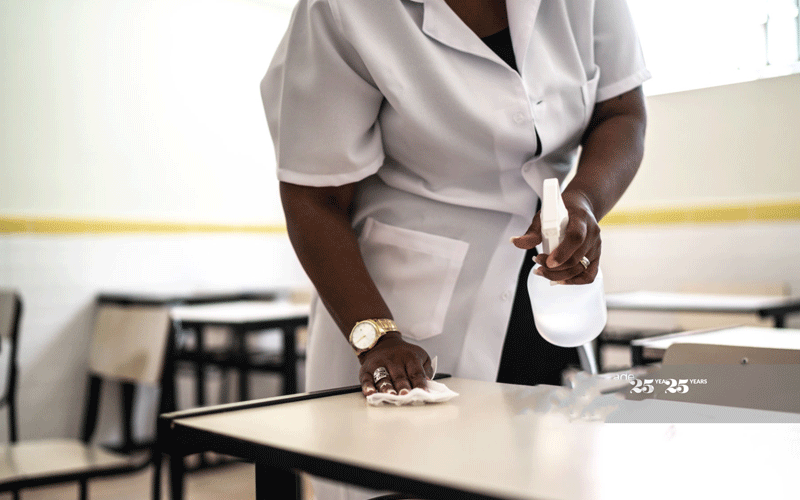Financial challenges cripple operations in schools

Experts in the education sector are calling on the government to increase budgetary allocations to schools countrywide, saying learning institutions are grappling with lack of money and inadequate resources.
Serious challenges occasioned by Covid-19 protocols have emerged since phased re-opening of schools last month as school administrators, both in public and private schools try to scrape through limited funds to meet the tough conditions and keep the learning going.
While public schools receiving some government funding, private schools have bitten the bullet with some closing institutions as debts pile up, following abrupt closure of their institutions in March, cutting out their revenue streams.
“We have reports from about 109 schools across the country that will not be coming back to business.
They have folded up to try something else because having no income for all those months has been extremely difficult,” says Peter Ndoro, the chairman Kenya Association of Private Schools.

Photo/COURTESY
Close to 39,000 learners will have to look for alternative schools, and that 1,400 teachers and 1,100 support staff have been rendered jobless by the closures.
Strectched schools
The situation in private school has been so dire that they have been forced to seek partnerships with banks for loans.
Two local banks recently agreed to loan schools, which the experts term as a risky venture.
Public schools are equally grappling with financial issues, despite receiving government funding.
Many had previous unpaid bills, salaries and bank loans before Covid-19 related financial demands got into the play.
Washing facilities, expansion of learning and feeding spaces, dormitories, sanitisers, masks for their staff, among other issues have stretched schools to the last coin, and unpaid water and electricity bills are rising with each passing day.
“Teachers have reported that the schools are still living in the old normal. Many have financial challenges adapting to the new normal of Covid-19,” observes Akello Misori, the Kenya Post-Primary Education Teachers (Kuppet) union.
In the 2019/2020 financial year, education was allocated Sh 473 billion, considered one of the highest budgetary allocations in recent years.
This amounted to 5.3 per cent of the 2018 Gross Domestic Product (GDP). Yet, with 50 per cent of this allocation going to the hiring and payment of over 300,000 teachers little is left for infrastructure developments in schools mong other requirements.
Still shortage of teachers persists in public schools, especially now with the 100 per cent transition from primary to secondary school.
Inadequate funding
Overall, the country has over 17 million children and youth in education and training. Of these, 13 million are in primary and secondary schools, about 500,000 in public universities with the rest in early childhood education and non-university tertiary institutions, according to data by the Kenya National Bureau of Statistics
The emergence of Covid-19 has exacerbated the financing challenges of education in Kenya and other countries across the world.
At a time when countries are making difficult choices and trade-offs to turn societies around, education experts note that it must be given top priority since it is a pillar for recovery.
“And yet only a miniscule share —on average less than one per cent– has been set aside for education and training in national stimulus packages.
“Financing education is not a cost, it is our most crucial long-term investment.
If we do not allocate this funding now, we will face a bleaker future,” observes Audrey Azoulay, United Nations Educational, Scientific and Cultural Organisation (UNESCO) director general during a recent online discussion with global heads of state, development partners and education experts on education financing in the Covid-19 era.
The conference endorsed a declaration, which defines priority actions that are essential for educational recovery in the coming 15 months.
Among the most critical declaration for governments is to maintain or increase the share of public spending on education to at least four to six per cent of GDP and/or 15-20 per cent of public expenditure.
Donor organisations and development partners were called upon to increase the volume, predictability and effectiveness of international aid, and ensure target aid to countries and populations most in need, including those who are not reached by government programmes.
Governments were called upon to support all teachers as frontline workers and paying serious heed to their training and professional development.
Investing in skills development from the socio-emotional dimension to gaining competences for new jobs was also a critical step in ensuring continuity as education institutions re-open in Covid-19 period.
Finally, governments were called to narrow the digital divide that has shut out education for one third of the world’s students.
“Education is the solution, and financing and political will are critical. I call on all countries and international partners to act now, together, for education to transform lives,” noted Antonio Guterres, the United Nations Secretary General.







